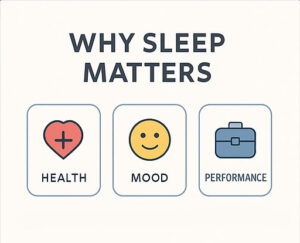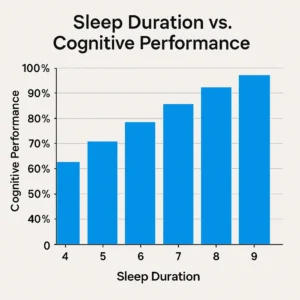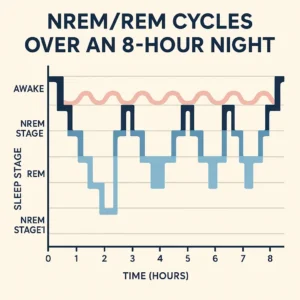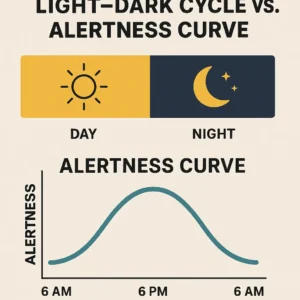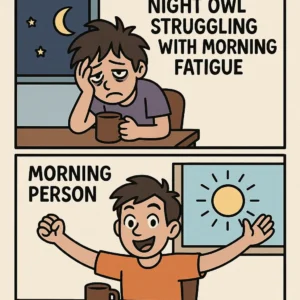Introduction
If you’ve ever woken up feeling as though you barely rested at all—foggy brain, heavy eyelids, and a serious craving for caffeine—you’re in the right place. Sleep isn’t just “lights off”; it’s a dynamic, essential process that repairs the body, recharges the mind, and fortifies your health in ways you might never realize. In this article, we’ll hold your hand through the core principles of sleep: what it is, why it matters, and exactly how to start sleeping better tonight. Think of this as your roadmap from exhaustion to energized, with easy-to-follow tips, myth-busting facts, and real-life examples to keep things relatable.
1. What Is Sleep & Why We Need It
1.1 Defining Sleep as an Active Process
Contrary to the idea that sleep is merely “switching off,” research shows it’s an active state where your body performs critical maintenance. While you rest, your brain consolidates memories, your muscles repair micro-tears, and your immune system manufactures the cells you need to stay healthy. In short, sleep is your body’s nightly tune-up—skipping it is like ignoring the oil change light in your car.
1.2 The Benefits of Quality Zzz’s
Getting consistent, restorative sleep isn’t a luxury; it’s a cornerstone of well-being. Key perks include:
- Sharper Memory & Learning: During deep NREM sleep, your brain files away new information, making it easier to recall facts and skills.
- Emotional Balance: REM sleep helps process emotions and can lower your risk of mood disorders like anxiety or depression.
- Physical Restoration: Growth hormone surges in deep sleep, repairing tissue and boosting muscle recovery after workouts.
- Immune Defense: Adequate sleep supports antibody production, helping you fight off colds and viruses more quickly.
1.3 Real-World Example
Meet Sarah, a marketing manager who was clocking just five hours a night. She struggled with brain fog, felt irritable by mid-afternoon, and reached for sugary snacks to push through. After committing to seven hours—by shifting her bedtime 30 minutes earlier over two weeks—she noticed:
- A sharper focus in meetings
- Fewer mood swings during stressful projects
- A drop in afternoon snack cravings
Just seven extra hours transformed her whole workday.
2. The Stages of Sleep
No two hours of sleep are the same. A healthy night cycles through four stages in ~90-minute loops:
2.1 NREM Sleep (Stages N1, N2, N3)
- Stage N1 (Light Dozing): The bridge between wakefulness and sleep—lasts just minutes.
- Stage N2 (Deeper Light Sleep): Your heart rate slows, and body temperature drops; this stage makes up about 50% of your night.
- Stage N3 (Deep Sleep): The restorative phase—blood pressure dips, muscles regenerate, and growth hormone releases. Skimp here, and you’ll feel groggy.
2.2 REM Sleep & Emotional Processing
- Rapid Eye Movement (REM): Your eyes dart beneath closed lids, the brain is as active as when you’re awake, and vivid dreams occur. REM is crucial for creativity and emotional balance. Its really what makes your brain tick, feel good and “work” – ever wake up and full absolutely incredible mentally, like you could do anything that day, you could take on the world? Your brain is on fire, words trip off the tongue, you just plugged in and switched on? That’s likely because you got really good REM sleep
2.3 The 90-Minute Sleep Cycle
On average, we cycle through NREM → N2 → N3 → N2 → REM every 90–110 minutes. Early night cycles emphasize deep (N3) sleep, while later cycles lean into REM. Interruptions—like checking your phone—can reset the loop, costing you deep-rest benefits.
3. Circadian Rhythms & Your 24-Hour Clock
3.1 The Suprachiasmatic Nucleus: Your Brain’s Timekeeper
Tucked behind your eyes, the suprachiasmatic nucleus (SCN) is the maestro of your internal clock. It reads light signals through your retinas and tells your body when to feel awake or sleepy.
3.2 Light, Melatonin & the Sleep–Wake Signal
- Morning Light: Triggers cortisol release to boost alertness.
- Evening Darkness: Signals melatonin production in your pineal gland, preparing you for sleep.
Reducing blue light exposure from phones or screens two hours before bed can help your melatonin rhythm stay on track.
3.3 When Your Clock Gets Out of Sync
Shift workers, frequent travelers, or night owls often clash with their circadian rhythm. You might feel wide awake at 3 AM but groggy when the sun rises. Chronic misalignment has been linked to higher risks of obesity, diabetes, and mood disorders.
4. Common Causes of Poor Sleep
4.1 Lifestyle Culprits
- Caffeine & Alcohol: Late-afternoon coffee can linger; alcohol might help you nod off, but it fragments sleep later.
- Irregular Schedules: Weekend sleep-ins confuse your clock and make Mondays tougher.
4.2 Environmental Stressors
- Noise & Light: Even small sounds or light leaks can nudge you out of deep sleep.
- Temperature Extremes: Ideal bedroom temp is around 65°F (18°C). Too hot or cold disrupts rest.
4.3 Mental & Emotional Factors
- Stress & Anxiety: Racing thoughts can prolong stage N1 or N2, cutting into deep sleep.
- Screen Time: Notifications and endless scrolling trigger the brain into wakeful mode.
5. Practical Sleep Hygiene & Routines
5.1 Building a Calming Pre-Sleep Ritual
Craft a nightly wind-down to signal your body it’s time to rest. Ideas include:
- Gentle Stretching or Yoga: Relaxes muscles and lowers cortisol.
- Reading a Physical Book: Keeps eyes off screens and mind calm.
- Warm Bath or Shower: A post-shower drop in body temp mimics natural sleep onset.
5.2 Optimizing Your Sleep Environment
- Block Out Noise: White-noise machines or earplugs can help.
- Dim the Lights: Blackout curtains or an eye mask are game-changers.
- Find Your Cool Spot: Aim for 60–68°F (15–20°C).
5.3 Consistency Is King
Your body thrives on routine. Aim to go to bed and wake up within the same 30-minute window daily—even on weekends. Your circadian rhythm will thank you.
6. Debunking Common Sleep Myths
| Myth | Reality |
|---|---|
| You can “catch up” on lost sleep | Extra sleep on weekends doesn’t fully reverse sleep debt; it’s better to maintain nightly consistency. |
| A nightcap guarantees better rest | Alcohol helps you fall asleep but fragments REM and deep sleep later in the night. |
| Late-night exercise ruins your sleep | Moderate exercise up to 2 hours before bed is fine; intense workouts can boost body temperature too much if right before bedtime. |
Tip call-out: Evidence-based fixes, like morning light exposure and consistent schedules, work far better than quick myths.
7. Bringing It All Together: Your Personalized Sleep Plan
7.1 Assess Where You Are Now
Ask yourself:
- How many hours of sleep do I get on average?
- How often do I wake up feeling rested?
- What habits might be sabotaging my rest?
7.2 Setting SMART Sleep Goals
- Specific: “I will go to bed by 10:30 PM on weekdays.”
- Measurable: Track in a journal or app.
- Achievable: Start with a 15-minute earlier bedtime.
- Relevant: Aligns with fitness or work goals.
- Time-bound: Review progress weekly.
7.3 Tracking Progress & Adjusting
Keep a simple sleep diary: note bedtime, wake time, and sleep quality (1–5). After two weeks, spot patterns and tweak your plan. If persistent issues remain, consider seeing a sleep specialist.
8. Next Steps & Further Resources
- Deep dives into our pillar series:
- External expert reads:
- Top sleep-tracking apps: a quick pro/con list.
